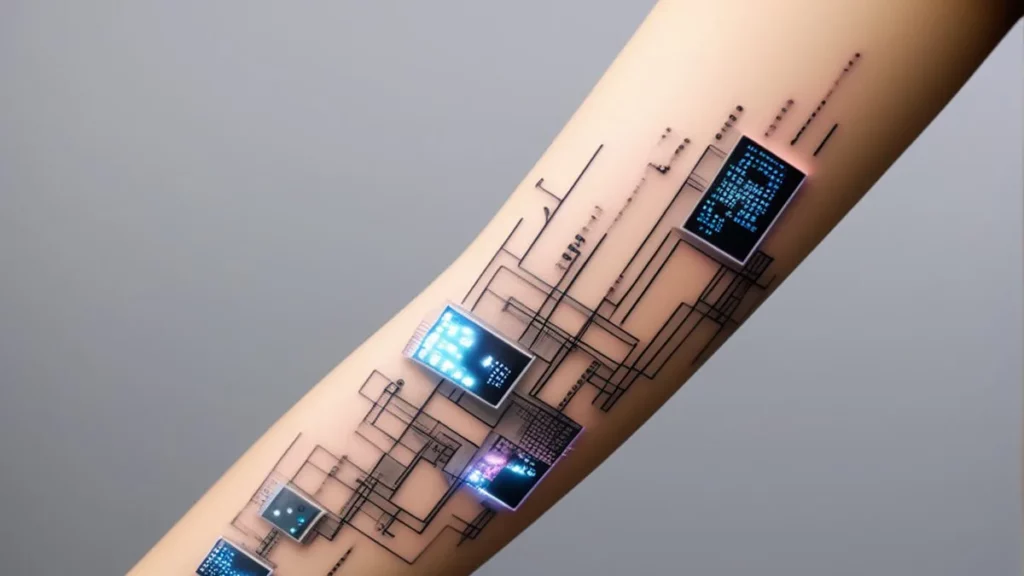Key Takeaways
- The use of facial recognition technology raises concerns about privacy, civil liberties, and the potential for abuse.
- Examples from New York City and Israel highlight the tension between the benefits of facial recognition and its risks.
- Regulatory frameworks, public-private partnerships, public awareness, and technological innovation can help mitigate risks and promote responsible use.
- Striking the right balance between benefits and risks will continue to be a challenge as the technology evolves and becomes more widespread.
Facial recognition technology has been a topic of debate in recent years, as its use raises concerns about privacy, civil liberties, and the potential for abuse.
Two recent examples, one in New York City and the other in Israel, highlight the varying applications and concerns surrounding the technology.
These cases exemplify the ongoing struggle to balance the potential benefits of facial recognition with the potential harms it poses to individuals and society.
New York City: Proposed Legislation to Ban Facial Recognition in Residential Buildings
In New York City, a proposed law discussed during a recent City Council hearing aims to make the use of facial recognition and other biometric identifiers in residential buildings illegal.
The first-of-its-kind legislation has received support from various council members, including Fabian Rogers, a Brooklyn resident who successfully campaigned against his landlord’s attempts to install facial recognition cameras in his apartment building in 2018.
Biometric Surveillance Concerns
Privacy and civil rights advocates argue that facial recognition technology poses significant threats to civil liberties, civil rights, and privacy.
Critics fear that landlords may abuse biometric data to issue petty lease violations against tenants, leading to evictions.
Furthermore, racially biased algorithms in these systems may exacerbate gentrification.
Proposed Legislation
Two bills are currently under consideration in the council hearing. One would make it unlawful for landlords who own multiple buildings to install biometric identification systems to scan tenants without their express consent.
The other bill seeks to modify administrative laws to prohibit places or providers of public accommodations, such as retail stores, movie theaters, sporting stadiums, and hotels, from using biometric identification technology.
Unique Threats of Biometric Surveillance
Advocates argue that biometric surveillance poses a unique threat to citizens due to the “timeframe of harm” associated with biometric identifiers.
Once compromised, biometric data is vulnerable for life. Even improved accuracy levels do not address the fundamental flaws and biases of facial recognition technology.
Israel: Facial Recognition Technology Used to Monitor Palestinians in the West Bank
A new report by Amnesty International reveals that Israel is increasingly relying on facial recognition technology to track Palestinians and restrict their passage through key checkpoints in the occupied West Bank.
The software, known as Red Wolf, uses a color-coded system to guide soldiers on whether to let individuals pass, stop them for questioning, or arrest them.
Automated Apartheid
The technology focuses almost exclusively on Palestinians, leading Amnesty to describe the process as “automated apartheid.”
Israel has strongly denied operating an apartheid regime.
The Israel Defense Forces maintain that they carry out necessary security and intelligence operations while minimizing harm to the Palestinian population.
Surveillance Systems
Israel’s use of facial recognition at checkpoints builds on other surveillance systems deployed in recent years.
Government forces use the Blue Wolf app to identify Palestinians and register them in a central database or check if they are wanted for arrest or questioning.
Additionally, video surveillance systems capable of facial recognition, such as Mabat 2000, have been installed in areas like East Jerusalem.
The first-of-its-kind legislation has received support from various council members, including Fabian Rogers, a Brooklyn resident who successfully campaigned against his landlord’s attempts to install facial recognition cameras in his apartment building in 2018.

Loss of Privacy and Control
Palestinian activist Issa Amro claims that the Israeli military’s reliance on automated systems has eroded privacy and subjected Palestinians to constant oversight and supervision.
The facial recognition systems have been described as powerful tools for control and an invasion of privacy.
Striking a Balance: The Future of Facial Recognition Technology
As these examples demonstrate, the use of facial recognition technology raises a host of ethical and practical concerns. In both cases, there is a clear tension between the potential benefits of the technology—such as enhanced security and more efficient identification processes—and the risks it poses to privacy, civil liberties, and the potential for abuse.
As the technology continues to evolve and become more widespread, it is crucial for policymakers, developers, and users to engage in open and transparent conversations about the implications of facial recognition and how to strike the right balance between innovation and privacy protection.
Regulatory Frameworks and Ethical Guidelines
One potential solution to the challenges posed by facial recognition technology is the development of robust regulatory frameworks and ethical guidelines.
By establishing clear rules around the collection, storage, and use of biometric data, as well as guidelines for transparency and accountability, policymakers can help to mitigate the risks associated with facial recognition technology while still enabling its potential benefits.
Public-Private Partnerships
Another approach to addressing the concerns surrounding facial recognition technology is to foster public-private partnerships.
By involving private sector stakeholders in the development and implementation of facial recognition systems, governments can encourage innovation while ensuring that privacy concerns and civil liberties are addressed.
This collaboration can lead to the development of more accurate and less biased facial recognition systems, as well as the establishment of best practices for their use.
Public Awareness and Education
Raising public awareness and promoting education on the capabilities and limitations of facial recognition technology is also crucial.
Ensuring that citizens understand the technology and the privacy concerns associated with its use can help to create a more informed public discourse and enable individuals to make better decisions about the ways in which they engage with facial recognition systems.
Technological Innovation and Bias Reduction
Finally, addressing the inherent biases and flaws in facial recognition technology is an ongoing challenge for developers and researchers.
By investing in research and development, as well as collaborating with diverse communities, technology companies can work to improve the accuracy and fairness of facial recognition systems.
This, in turn, will help to reduce the risks associated with the technology and make it a more valuable tool for society.
Conclusion
The examples of facial recognition use in New York City and Israel underscore the complex ethical and practical concerns surrounding the technology.
Striking the right balance between its potential benefits and the risks it poses to privacy, civil liberties, and abuse is a challenge that will continue to evolve as the technology becomes more advanced and widespread.
By developing robust regulatory frameworks, fostering public-private partnerships, raising public awareness, and investing in technological innovation, society can work towards a more responsible and ethical use of facial recognition technology.








